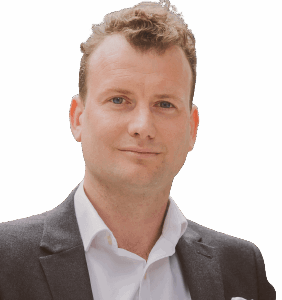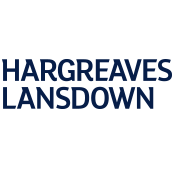| Name | Logo | GMG Rating | Customer Reviews | JSIPP Costs | Dealing Fees | CTA | Feature | Expand |
|---|---|---|---|---|---|---|---|---|
|
GMG Rating |
Customer Reviews 4.2
(Based on 1,094 reviews)
|
JSIPP Costs 0.25% |
Dealing Fees £1.50 – £5 |
See Offer Capital at risk |
Features:
|
AJ Bell Junior SIPP Review: Best Junior SIPP 2025 Account: AJ Bell Junior SIPP Description: With the AJ Bell Junior SIPP, you can invest in UK shares, international shares, investment funds, investment trusts, ETFs, and bonds. There is also a regular investment service that allows you to make regular investments from £25 per month cost-efficiently.
Does AJ Bell have a good Junior SIPP? AJ Bell won Best Junior SIPP in the 2025 Good Money Guide Awards as it is ow cost with excellent customer service and a user-friendly platform with great research. AJ Bell is the cheapest Junior SIPP account we cover. AJ Bell charges 0.25% for a Junior SIPP. Share dealing fees are £5 unless 10+ deals in previous month, in which case it’s £3.50 Pros
Cons
Overall5 |
||
|
GMG Rating |
Customer Reviews 3.8
(Based on 1,763 reviews)
|
JSIPP Costs 0.45% |
Dealing Fees £5.95 |
See Offer Capital at risk |
Features:
|
Hargreaves Lansdown Junior SIPP Review Account: Hargreaves Lansdown Junior SIPP Description: We have ranked Hargreaves Lansdown as the best junior SIPP in 2024, 2023 and 2022 due to its market range and added value. Through the HL Junior SIPP, you can invest in a wide range of UK shares, international shares, investment funds (there are over 4,040 funds on the platform), investment trusts, ETFs, and bonds. How much does Hargreaves Lansdown charge for Junior SIPP? It’s free to buy funds for your children’s future with Hargreaves Lansdown’s junior SIPP, which can help them take control of more money for their retirement when they reach 18, but HL charges a 0.45% account fee for a Junior SIPP and 0.45% capped at £200 per year The annual charge for holding funds is 0.45% for the first £250,000. Shares are charged at £5.95 (plus FX fees for overseas shares). There are three ways to open an HL JSIPP:
Hargreaves Lansdown can sometimes be expensive compared to competitors, but there are only a few providers that offer Junior Self Invested Personal Pensions, and with HL you get what you pay for. Which is a well established provider that offers excellent research and access to small cap stocks and international markets. Pros
Cons
Overall4.8 |
Good Money Guide Chose The Best UK Junior SIPP Accounts Based On:
- 30,000+ customer votes and reviews in the annual Good Money Guide awards
- Our review team’s experiences testing the providers with real money
- A detailed comparison of the stand-out features offered by each Junior SIPP provider
- Good Money Guide’s exclusive interviews with the Junior SIPP provider platform CEOs and senior management
What is the best Junior SIPP in the UK?
AJ Bell won “Best Junior SIPP” in the 2025 Good Money Guide Awards. They scooped the award from long-term winners Hargreaves Lansdown because of their lower fee structure.
Previous Best Junior SIPP Winners:
- 2025 – AJ Bell
- 2024 – Bestinvest
- 2023 – Hargreaves Lansdown
- 2022 – Hargreaves Lansdown

What are Junior SIPPs?
Junior SIPPs are a self-invested personal pension product for under-18s.
This type of pension account offers a tax-efficient way of saving for your child’s retirement, as the government adds a top-up each year through tax relief, and when your child reaches 18, it turns into a regular SIPP.
How do Junior SIPPs work?
With the junior SIPP allowance, you can contribute up to £2,880 per year into the account.
Contributions are subject to 20% tax relief. That means that if you contributed the full annual allowance of £2,880, the government would contribute another £720 for you, taking the total contribution to £3,600.
Junior SIPPs must be opened by a parent or legal guardian on behalf of the child.
At 18, a junior SIPP converts into an adult SIPP, that the child can manage themselves.
As with a regular SIPP, money in a junior SIPP can’t be accessed until the account owner turns 55 (57 from 2028 onwards). This means that the money invested is locked away for the long term.

How Do You Open a Junior SIPP Account?
As junior SIPPs are designed for children under the age of 18, only a parent or legal guardian can open and manage the account on their behalf.
To open a junior SIPP follow these steps:
-
Choose a JSIPP
Apply online with a JSIPP provider like Hargreaves Lansdown or AJ Bell.
-
Deposit money
Once your account is open, you will need to fund it before investing.
-
Get contributions
Anyone can pay into a junior SIPP and investing platforms can provide a payment link or account number for you to reference when you make the deposit.
-
Choose investments
As soon as funds are allocated to a child's junior SIPP you can choose what to invest in. This can be either stocks (high-risk), funds (medium-risk) or bonds (low-risk).
Keep in mind that after you have opened a junior SIPP you can only get tax relief on the first £2,880 you deposit each year.
The Costs of a Junior SIPP account
Junior SIPPs generally cost the same as an adult SIPP (which is what they turn into at age 18) and vary a bit depending on provider. Here are the main costs of holding a junior SIPP account:
Account costs. A provider will charge you an annual fee for looking after a child’s investments. AJ Bell is the cheapest for this and charge 0.25% compared to Hargreaves Lansdown’s 0.45%.
Dealing charges. Every time you buy and sell shares, bonds or funds you will be charged. Hargreaves Lansdown is free to buy and sell funds though, whereas AJ Bell Charges £1.50 per deal.
FX fees. If you are buying individual shares in US companies for a JSIPP you will be charged a fee to convert your GBP into USD. As US stocks are very popular and children like to invest in brands they know this can be quite expensive.
You can see in our guide to buying US stocks from the UK which broker has the cheapest overall FX fees. But for junior SIPPs AJ Bell is slightly cheaper than HL, charging 0.75% as opposed to 1%

You also need to consider exit fees. If you decide to move your child’s junior SIPP to another provider you may be charged per stock. AJ Bell, for instance, charges up to £100 when you leave. But it will cover some of the costs of another JSIPP provider’s exit fees if you transfer a junior SIPP into AJ Bell.
✅FCA Regulation – Keeping Your Children’s Future Protected
All UK junior SIPP providers must be regulated by the Financial Conduct Authority (FCA), ensuring they’re financially secure, fair to customers, and fully compliant.
At Good Money Guide, we only feature FCA-regulated junior SIPPs, where your funds are protected by the Financial Services Compensation Scheme (FSCS).
Are Junior SIPPs a Good Idea?
There are many benefits to opening and contributing to a junior SIPP.
By putting money into a junior SIPP for your child, you can potentially them a financial head start. Money in a junior SIPP has decades to grow so by the time the child reaches retirement age, they could have a considerable amount of pension savings.
Contributing to a junior SIPP is also a tax-efficient way of investing. Contributions come with 20% tax relief, and all gains and income within the SIPP are tax-free.
- Related guide: SIPP tax relief explained
JSIPP Pros
- Compounding returns: Investing money for your children while they are young could help them build up considerable pension savings over the long term. This is due to the power of compounding. Compounding is the process of generating earnings on an asset’s past earnings. Over time, it tends to result in the exponential growth of an investor’s money
- Tax-efficient: Investments within a SIPP are not subject to income or capital gains taxes. Meanwhile, contributions come with 20% tax relief. This means that for every 80p you pay into your child’s junior SIPP, the government will add another 20p for you, taking the total contribution to £1
- Family and friend contributions: Anyone can contribute to a junior SIPP, including grandparents. It’s worth noting that there can be inheritance tax (IHT) exemptions for grandparents who make contributions to junior SIPPs for their grandchildren
JSIPP Cons
- Reduced access: The money within the account is locked away for the long term. Currently you can’t access money within a Junior SIPP until age 55. However, this age is set to rise to 57 in 2028 and likely to rise further going forward. So, with this type of investment account, you must be comfortable gifting the money and locking it away for decades
- Tax rules can change: So, there’s no guarantee that Junior SIPPs will always offer the level of tax-efficiency that they do today
- Potential loss: With any investment, you can receive less back than you put in if the investments you choose perform badly
- Investment decisions: You’re responsible for managing the money in the account. If you are worried about this you can opt for a robo-advisor, which is a form of managed pension account
Junior SIPP Returns Calculator
It’s amazing how faster money grows when invested for longer. See what a difference investing in a JSIPP from birth will make.
Use our free and easy junior SIPP calculator to see how much their pension pot would be worth when they turn 18.
Is it worth opening a Junior SIPP?
👀 Spoiler alert: YES! If you invested just £240 a month from birth, your child’s junior SIPP would be worth over £84,000 based on 5% annual returns when they reach 18.
If then your child didn’t make any further contributions, based on compounding interest of 5% when they retired at 55, their pension pot would be worth over £510,000 or if they didn’t retire until 65 it would be worth over £830,000.
However, if your child continued to invest only £250 a month their adult SIPP at 65 would be worth nearly £1.4 million.
That is quite a staggering amount of money for £250 a month.
Please note these returns do not incorporate account or underlying investment fees. Past performance is no guarantee of future results.
What Can You Invest in a Junior SIPP?
One of the great things about Junior SIPPs as opposed to managed pensions is that you can invest in whatever you like, including individual companies.
This is a great way to get kids interested in investing, as you can buy them shares in their favourite brands like Nike, Apple and even Roblox!
Providers such as Hargreaves Lansdown, AJ Bell offer access to a wide range of investments, including:
- UK shares – great for getting your children to understand how money works
- International shares – you can invest in kids favourites like Apple and Nike
- Investment trusts – Investment trusts and funds spread money across lots of shares, bonds, or assets, reducing the risk of relying on a single investment.
- Investment funds – these are run by experienced managers who research, pick, and monitor investments, making it easier to grow a Junior SIPP over the long term.
- Exchange-traded funds (ETFs) – invest in sectors and asset classes like tech or gold.
- Bonds – buy bonds that will generate regular income for your children’s pension
You can also keep money in cash within the SIPP if you wish to. This can be useful if you haven’t decided where you want to invest the money, or you are waiting for a better time to invest.
How you invest your child’s money within a Junior SIPP is down to you. Until the child turns 18, you’re responsible for managing the SIPP and have full control over the investments within the account.
Junior SIPP Alternatives
There are several alternatives to junior SIPPs that may be worth considering depending on your requirements and financial circumstances.
Junior Stocks & Shares ISA
A junior stocks and shares ISA is a tax-efficient investment account open to those in the UK aged under 18. As with junior SIPPs, all gains and income within the account are tax-free.
One of the main advantages of a junior ISA, compared to a junior SIPP, is the annual allowance is significantly higher, at £9,000.
Another advantage is that money can be accessed by the account owner at age 18.
On the downside, contributions into a junior ISA don’t come with tax relief. So, any contributions into the account won’t be topped up by the government.
Stakeholder Pensions
Parents can also set up a stakeholder pension for children under 18 which is type of managed pension offered by some financial services companies in the UK such as Aviva.
As with Junior SIPPs, you can invest £2,880 per year into these pensions, and contributions come with 20% tax relief. One benefit of stakeholder pensions is that they allow you to hand over the responsibility of choosing investments to the account provider.
This means they can be less time-consuming to manage. On the downside, stakeholder pensions usually have far less investment options than Junior SIPPs.
Typically, you can only invest in a limited range of funds, and you can’t invest in individual shares.
Junior SIPP FAQs:
No. A junior SIPP cannot be converted into a Junior ISA because they are very different investment products with different tax benefits and allowances. Once you invest in a Junior SIPP it becomes an adult SIPP at 18 and you cannot access it until 55. The main differences between a Junior SIPP and a Junior ISA are that a Junior SIPP is for retirement and a Junior ISA can be accessed by your children when they turn 18.
When your child turns 18, the junior SIPP automatically becomes a regular low-cost SIPP, and control of the account is passed on to the child. This means that from the age of 18, they are responsible for managing the money in the account and deciding how and where it is invested.
Further reading: You can find out more about regular SIPPs and how they work here.
With a junior SIPP, you can contribute up to £2,880 per year. Contributions are subject to 20% tax relief which means that for every 80p you put in, the government will add another 20p, taking the total contribution to £1.
So, if you contribute the full annual allowance of £2,880, the government will top this up to £3,600.
You can have as many Junior SIPPs as you want. However, you can only invest a total of £2,880 (the annual allowance) across all your accounts.
The lifetime allowance (LTA) was the total amount of money you could build up in your pension accounts while still enjoying the full tax benefits for inflation. But it no longer applied after 5 April, 2024.
You can open a junior SIPP for any child under the age of 18.
Be aware, however, that if the child is over the age of 16, they may need to provide consent by signing the application form.
No, Vanguard does not offer junior SIPP accounts. Infact, Vanguard does not offer SIPPs, they offer personal pensions. However, you can buy Vanguard funds in Junior SIPPs with platforms like Hargreaves Lansdown and AJ Bell.
You can use SIPP contributions to reduce your adjusted net income. This can potentially help you avoid Child Benefit tax charges if your income is just above the Child Benefit threshold.
Yes, Junior SIPP contributions are subject to 20% tax relief. That means that if you contributed the full annual allowance of £2,880, the government would contribute another £720 for you, taking the total contribution to £3,600.
For example: If you set up a Junior SIPP for your newborn and pay in the maximum £2,880 before the end of the tax year, HMRC will automatically add £720 in basic-rate tax relief. That means instead of £2,880 going into your child’s pension, £3,600 is invested straight away. Repeat that every year until they’re 18, and you’ll have contributed £51,840 personally, but the pot will actually have received £64,800 before any investment growth at all.





